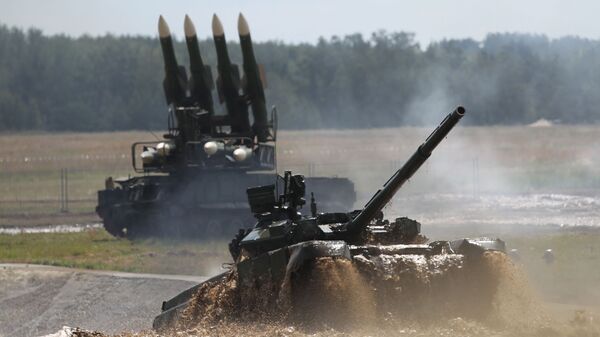In his analysis, published by the independent online newspaper Svobodnaya Pressa, Zhukov lays out some of the best-known and most powerful ground vehicles serving in the Russian armed forces, from tanks and armored personnel carriers to 4x4s and missile systems.
T-90 MBT
Zhukov's list begins, as might be expected, with a tank considered to be the backbone of the Russian army's striking power – the T-90 main battle tank. "The tank features many versions and modifications, customized to specific combat conditions. There is, for example, the T-90MS, equipped with a 39 liter 12-cylinder diesel engine with a supercharger." The T-90MS's monster engine has over 1,000 horsepower, together with 4,000 Nm of torque, and its drive train includes an automatic transmission.

T-90s, built in central Russia by the Nizhny Tagil-based Uralvagonzavod Machine Building Plant, get their engines from the Chelyabinsk Tractor Plant, located about 350 km south of Nizhny Tagil. Export versions of the tank slated for work in high temperature areas are equipped with improved engine cooling systems.
BMP-2
Moving on, the analyst recalled the engine characteristics of the BMP-2, the world-famous second-generation amphibious infantry fighting vehicle that entered into service in the 1980s. That vehicle, equipped to carry 3 crew plus 7 passengers, and equipped with a 30 mm auto cannon, features a 6-cylinder, 16 liter diesel engine, giving it 300 horses and 980 Nm of torque under the hood.
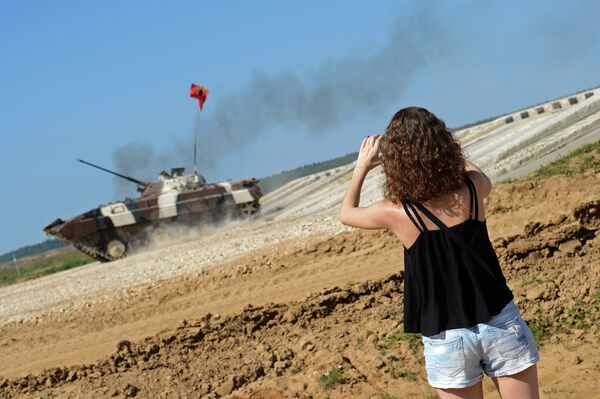
Like many other late Soviet-era designs, the BMP-2 has received a series of upgrades in recent years, with its producer, Kurganmashzavod, rolling out the BMP-2M. In addition to its upgraded weaponry, this version also features a 400 hp turbocharged diesel engine (up from the original engine's 300 horses).
Tigr IMV
The GAZ Tigr multipurpose 4x4 all-terrain infantry mobility vehicle became one of the first completely new designs introduced into the Russian ground forces in the post-Soviet period. Designed as the Russian answer to the US military's Humvee, the vehicle is capable of carrying 10-11 personnel, depending on the variant, or up to 1.5 tons of cargo.
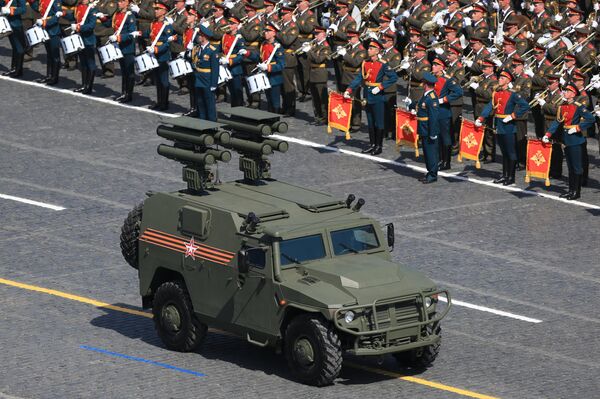
The latest modification of the Tigr features a 6.7 liter YaMZ-530 6-cylinder engine with 300 horsepower and 980 Nm of torque; the engine is built by the Yaroslavl Engine Plant.
Many earlier versions of the vehicle featured the US-made Cummins 5.9 liter diesel engine, doubtlessly a reliable engine, but one going out of style in recent years due to import substitution initiatives carried out by the government. At the same time, while the Tigr may share some characteristics with its American cousin, testing in the harsh conditions of Russian winter has demonstrated the Russian vehicle's superior off-road capabilities compared to the Humvee.
Khrizantema Anti-Tank Missile System
Advanced ground-based missile systems need an armored carrier platform to deliver them, and the Khrizantema (Russian for the chrysanthemum flower) ATM system is no exception. Mounted aboard the Khrizantema-S tank destroyer, which uses a BMP-3 chassis, the ATM system's launcher features automatic reload from an internal 15-round magazine. The vehicle is capable of targeting several targets simultaneously.
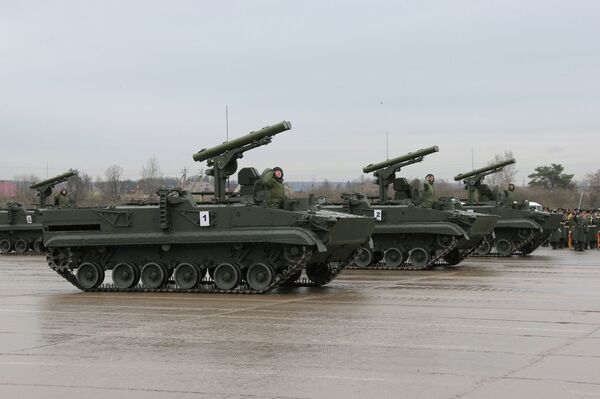
"The heart of this 'flower' is the 10-cylinder UTD-29 450 horsepower diesel engine, which makes over 1,4560 NM of torque," Zhukov recalled.
9K720 Iskander SRBM
The 9K720 Iskander mobile short-range ballistic missile system, first introduced in 2006, is known for its ground-to-ground missiles' capabilities, which are virtually impossible to intercept due to their unpredictable trajectory. The system can be armed with several types of 500 kg warheads, up to and including tactical nukes. Less is said, however, about the vehicle carrying the system.
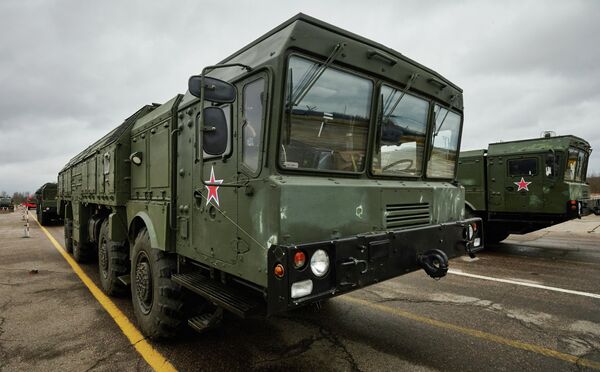
The Iskander system has been known to be mounted on-board Kamaz trucks, produced in Naberezhynye Chelny, Tatarstan, and on vehicles produced by the Minsk Wheel Tractor Plant, in Belarus, Russia's ally in the Collective Security Treaty Organization. The vehicles are equipped with an 8-cylinder turbocharged diesel engine with direct fuel injection. The drive train hauling this beast of a weapons system has 500 hp and 1,400 Nm of torque.
MTU-20 Engineering Vehicle
The success of the MTU-20 bridge layer, featuring a twin-tread superstructure based on a T-55 tank chassis, is basically the real-life embodiment of the maxim 'an oldie but a goodie'. Created by Siberia's Omsk Transport Machine Factory, also known for its production of the T-80 tank, the vehicle was designed to overcome water barriers up to 15 meters wide, with its 20 meter fold-out bridge. The armored engineering vehicle has a 39 liter 12-cylinder diesel engine under the hood, producing 580 horsepower and 1,960 Nm of torque. Widely exported, the MTU-20 is operated by the armies of several former Soviet republics, including Russia and Ukraine, and by Egypt, India, Nigeria, Syria and Finland.
2S9 Nona-SKV
The 2S9 Nona-SKV is a lightweight, air-droppable self-propelled 120 mm mortar system introduced into the Soviet military in the mid-1980s. Featuring the same aluminum hull chassis as the BTR-D airborne multi-purpose tracked APC, the system was designed to suppress enemy fortifications, artillery, armored and mobile targets. Its 120-mm rounds can be fired almost immediately, with little to no preparation time necessary. The vehicle has a turbocharged 8-cylinder YaMZ-238M2 engine, produced by the Yaroslavl Motor Plant; the engine puts out 240 hp and 883 Nm of torque.
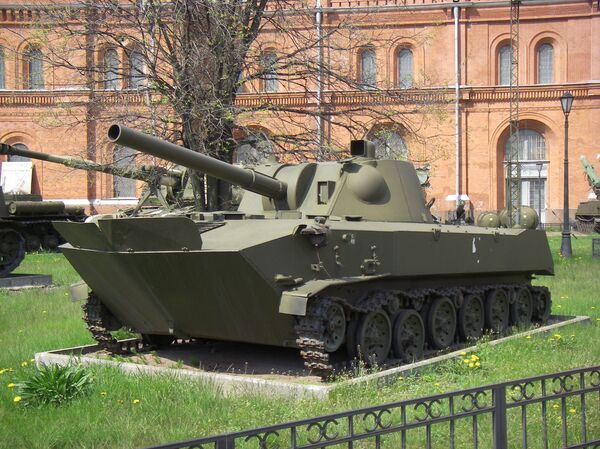
IMR-3M Combat Engineering Vehicle
Perhaps one of the best-known combat engineering vehicles of the Russian army, the IMR-3M is based on a T-90 main battle tank chassis. The 2-man vehicle features a universal bulldozer attachment, a telescopic jib with universal work tool, and a treadway plough sweep. The vehicle can cross water obstacles through up to 5 meters of water, and features gas and radiation protection, together with a 12.7 mm machine gun.

To perform its duties, which include clearing roads, leveling, back-filling ditches, trenches and craters, creating driveways, and excavating, the vehicle uses a V-84MS 12-cylinder diesel engine, with 840 horsepower and 3,334 Nm of torque.
BREM-1 Armored Recovery Vehicle
Rounding out the heavy vehicles in Zhukov's list is the BREM-1 armored repair and recovery vehicle, one of several modifications of the BREM family of recovery vehicles. The BREM-1 has the same chassis as the T-72 tank.
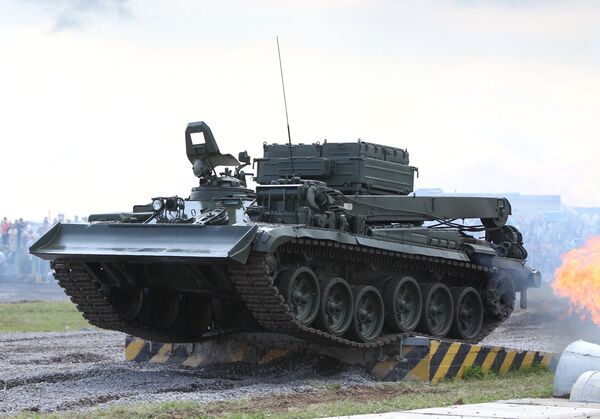
To fulfill its tasks – including evacuation of damaged or stranded vehicles and delivering repair crews to the combat zone, the armored vehicle uses a 12-cylinder, 840 horsepower engine, with torque of up to 3,330 Nm.
Armata Universal Combat Platform
No analysis of the drivetrain capabilities of contemporary Russian military vehicles would be complete without the Armata, Russia's next-generation platform for heavy military vehicles, including the T-14 tank, heavy APCs, self-propelled artillery systems, and engineering vehicles.
The Armata's 12H360 power plant, designed by the Chelyabinsk Tractor Plant, features a 12-cylinder multi-fuel turbocharged engine producing between 1,200 and 1,800 horsepower. The powertrain features a 16-gear automatic transmission. The engine's design and placement makes it possible to switch out and replace a damaged engine in 30 minutes. The 1,200 hp engine is designed for 10,000 hours of guaranteed operating life –that is, for the duration of the tank's operation.

The T-14 Armata tank, capable of speeds up to 90 km/h, can travel up to 500 km without refueling –its four-stroke engine a significant improvement over the two-stroke engines of Soviet days. The 12H360's service life is 1.5-fold greater than its 80s-designed predecessors, has an easier time starting at low temperatures, and operates using less air for its cooling system, which reduces the machine's visibility in infrared range.

